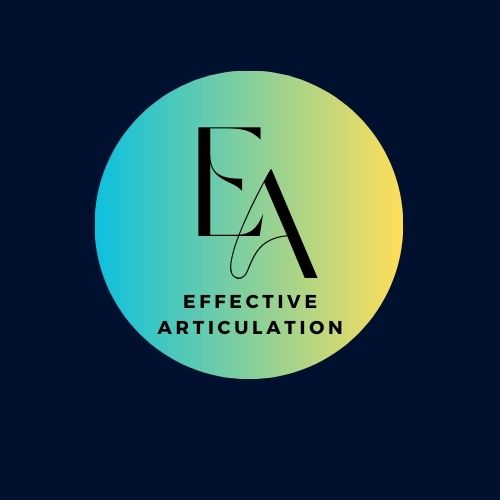Have you ever been in a conversation where someone said, “I’m fine,” but something in their face told you they weren’t?
Maybe it was a fleeting twitch of their lips, a momentary furrow of their brow, or a quick glance away. These split-second facial movements are called microexpressions, and they’re one of the most fascinating, yet often overlooked, aspects of human communication.
They’re like the secret language of emotions, revealing what words sometimes try to hide.
Let’s dive into the world of micro expressions and explore how they shape our interactions, relationships, and even our understanding of ourselves.
Spoiler alert: once you start noticing them, you’ll never look at communication the same way again.
What Are Micro expressions, anyway?
Micro expressions are brief, involuntary facial expressions that flash across a person’s face in a fraction of a second usually between 1/25th to 1/15th of a second.
They occur when someone is trying to conceal an emotion, or when an emotion is so intense that it leaks out before they can control it. Think of them as emotional “tells,” like in poker, but for everyday life.
Dr. Paul Ekman, a pioneer in the study of emotions and facial expressions, identified seven universal micro expressions that correspond to basic emotions: happiness, sadness, anger, fear, surprise, disgust, and contempt.
These expressions are universal, meaning they’re recognized across cultures, languages, and even species. Whether you’re in New York, Nairobi, or Tokyo, a raised eyebrow or a quick smirk means the same thing.
Why Should We Care About Micro expressions?

You might be thinking, “Okay, cool, but why does this matter?” Well, micro expressions matter because they reveal the truth behind the mask.
In a world where people often say what they think others want to hear, micro expressions give us a glimpse into what someone is really feeling. They’re like emotional X-rays, cutting through the noise of words and revealing the raw, unfiltered truth.
Imagine you’re in a job interview. The interviewer smiles and says, “We’ll be in touch,” but you catch a fleeting look of disappointment or doubt on their face.
That micro expression might tell you more about your chances than their polite words. Or picture a first date where your partner says, “I had a great time,” but you notice a quick flash of discomfort or disinterest.
That tiny cue could save you from wasting your time or help you address an issue before it becomes a problem.
The Science Behind Micro expressions
So, how do micro expressions work?
It all comes down to the brain. When we experience an emotion, it triggers the limbic system, which is responsible for our emotional responses. This system sends signals to the facial muscles, causing them to move in specific ways.
For example, when we’re happy, the corners of our lips pull up, and our cheeks rise. When we’re angry, our eyebrows lower, and our lips press together.
The catch? These movements happen automatically and unconsciously.
Even if we try to suppress them, they often leak out for a split second before we can regain control. That’s why micro expressions are so powerful. They’re honest, even when we’re not.
Micro expressions in Everyday Life
Let’s get real for a moment. How often do we say things we don’t fully mean? “I’m fine,” “It’s no big deal,” “I don’t care.”
These phrases are staples of polite conversation, but they’re often at odds with our true feelings. That’s where micro expressions come in.
They help us read between the lines and understand what’s really going on.
For example:
- In Relationships: Imagine your partner comes home from work looking tense. You ask, “How was your day?” They say, “Fine,” but you notice a quick flash of frustration or sadness. That micro expression tells you something’s wrong, even if they’re not ready to talk about it. It’s an invitation to dig deeper and offer support.
- In the Workplace: Your boss gives you feedback on a project. They say, “Good job,” but you catch a micro expression of disappointment. Instead of brushing it off, you can ask for constructive criticism and improve your work.
- In Social Settings: You’re at a party, and someone tells a joke. Everyone laughs, but you notice a micro expression of discomfort on one person’s face. That’s your cue to check in and make sure they’re okay.
The Dark Side of Micro expressions
Of course, like any tool, micro expressions can be used for good or ill. While they can help us connect with others and build empathy, they can also be weaponized.
For example, people who are skilled at reading micro expressions like negotiators, interrogators, or even manipulative individuals can use this knowledge to their advantage.
Think about it: if you can detect when someone is lying or hiding something, you can exploit that information.
That’s why it’s important to approach micro expressions with ethical considerations in mind. They’re a window into someone’s emotions, not a tool for manipulation.
Can We Control Our Micro expressions?
Here’s the million-dollar question: if micro expressions are involuntary, can we control them? The short answer is not entirely. Because they’re tied to our limbic system, they’re deeply rooted in our biology.
However, with practice, we can become more aware of our own micro expressions and learn to manage them better.
For example, if you’re in a high-stakes situation where you need to appear calm and confident (like a job interview or public speaking event), you can train yourself to regulate your emotions and minimize micro expressions.
But even then, they might still slip through. After all, we’re only human.
Become a Superstar at your next Presentation
How to Get Better at Reading Micro expressions
If you’re intrigued by micro expressions and want to get better at reading them, here are a few tips:
- Pay Attention: Start by observing people’s faces more closely. Notice the subtle movements around their eyes, mouth, and eyebrows.
- Practice Empathy: Try to put yourself in the other person’s shoes. What might they be feeling? How would that emotion show up on their face?
- Watch for Clusters: A single micro expression might not mean much, but if you see a cluster of cues—like a frown, averted gaze, and crossed arms—it’s a stronger indicator of someone’s emotional state.
- Use Technology: There are apps and online tools that can help you practice recognizing micro expressions. They’re like a workout for your emotional intelligence.
The Bigger Picture: Micro expressions and Emotional Intelligence
At the end of the day, micro expressions are more than just a party trick or a tool for reading people. They’re a gateway to deeper emotional intelligence.
By learning to recognize and interpret these subtle cues, we can become better communicators, more empathetic friends, and more effective leaders.
Emotional intelligence isn’t just about understanding others; it’s also about understanding ourselves. When we become more aware of our own micro expressions, we gain insight into our emotions and how they influence our behavior. It’s like holding up a mirror to our inner world.
Final Thoughts: The Power of the Unspoken
Communication is so much more than words. It’s tone, body language, and yes, micro expressions. These tiny, fleeting movements remind us that emotions are messy, complex, and deeply human. They connect us in ways that words alone cannot.
So, the next time you’re in a conversation, take a moment to look beyond the words. Notice the subtle shifts in expression, the unspoken emotions, the silent language that speaks volumes.
You might just find that the most meaningful conversations happen in the spaces between the words.
And who knows? You might even discover something new about yourself along the way.
After all, the face is the window to the soul and micro expressions are the curtains, fluttering in the breeze of our emotions.
I hope you found this post helpful! Please let us know what you think by leaving a comment below.
If you have any topics, you’d like to cover in future blog posts, please share your suggestions in the comments.
Disclosure: If you click on the affiliate links provided in this article and purchase the product, I will receive a small commission from the company of the product. You will not pay anything extra for your purchase. You can read the affiliate disclosure for more information.




10 thoughts on “The Silent Language: How Micro Expressions Impact Communication”
Microexpressions are a fascinating and powerful aspect of communication, often revealing more than words ever could. Kavitha’s insightful post sheds light on how these fleeting facial cues expose true emotions, whether in personal relationships, the workplace, or social settings. Understanding microexpressions enhances emotional intelligence, helping us navigate interactions with greater empathy and awareness.
One of the most compelling takeaways is the universality of microexpressions. Regardless of culture or language, emotions like happiness, anger, or fear manifest in the same way, making this “silent language” a global phenomenon. Dr. Paul Ekman’s research underscores their significance, demonstrating that our subconscious feelings often surface before we can mask them.
Additionally, the ethical considerations mentioned in the post are crucial. While reading microexpressions can deepen understanding, it’s essential to use this knowledge responsibly and not for manipulation.
This article is a great reminder that communication isn’t just about what we say—it’s about what we show. Once you start noticing microexpressions, you’ll never look at conversations the same way again!
Thank you for your thoughtful response! Microexpressions truly reveal the depth of human emotion, and understanding them can transform the way we connect with others. Using this knowledge ethically fosters empathy and strengthens communication in all aspects of life!
The ability to recognize micro-expressions can profoundly enhance interpersonal relationships, fostering deeper connections between individuals. By developing this skill, we can not only refine our personal interactions but also improve professional environments where effective communication is essential.
In contexts such as negotiations or conflict resolution, being attentive to these subtle cues can provide a significant advantage in understanding the true feelings and intentions of others, enabling more effective responses. Furthermore, cultivating an atmosphere where individuals feel encouraged to express themselves openly can help establish a culture of trust and mutual respect.
Ultimately, your examination of micro-expressions underscores the importance of emotional intelligence in our daily lives. By increasing our awareness of these nonverbal signals, we can become more empathetic and responsive communicators, leading to richer and more fulfilling interactions.
Well said! Recognizing micro-expressions truly enhances emotional intelligence, allowing for deeper connections and more effective communication in both personal and professional settings. Cultivating this awareness fosters trust, empathy, and stronger relationships overall!
This was such a fascinating and insightful read! I love how you broke down the science behind microexpressions and their impact on communication in different settings—especially in relationships and the workplace. It’s incredible how much we reveal without even realizing it! The ethical considerations you mentioned also gave me something to think about—awareness of microexpressions can be a powerful tool, but it’s important to use it with empathy and integrity. Thanks for sharing such a well-researched and engaging post!
HI Anika,
I’m so glad you enjoyed the post! Thank you
Micro-expressions are such a fascinating aspect of communication, especially considering how they can reveal true emotions before someone has a chance to filter their response. It makes me wonder – how can someone train themselves to recognize these fleeting expressions in real-time? Are there practical exercises or techniques that can improve one’s ability to catch them accurately? Also, do cultural differences impact how micro-expressions manifest, or are they universally consistent across different backgrounds? It would be interesting to explore how professionals, like law enforcement or negotiators, use this skill in high-stakes situations.
Great questions! Training to recognize micro-expressions involves practicing with facial recognition exercises, using tools like the Micro-Expression Training Tool (METT), and focusing on subtle muscle movements in real-time interactions. While micro-expressions are largely universal, cultural norms can influence how emotions are displayed, making context crucial. Professionals like negotiators and law enforcement officers refine this skill to detect hidden emotions, enhancing their ability to assess truthfulness and intent in high-stakes situations.
I love this article “communication is more than just words ” this are not just words but a reminder that when talking to someone you should also Pay attention to them and rear body language its very important you might learn something from your listener that you did not know, its like reading between the lines but with body language.
Thank you very much Kavitha for this article.
Thank you Ravin!